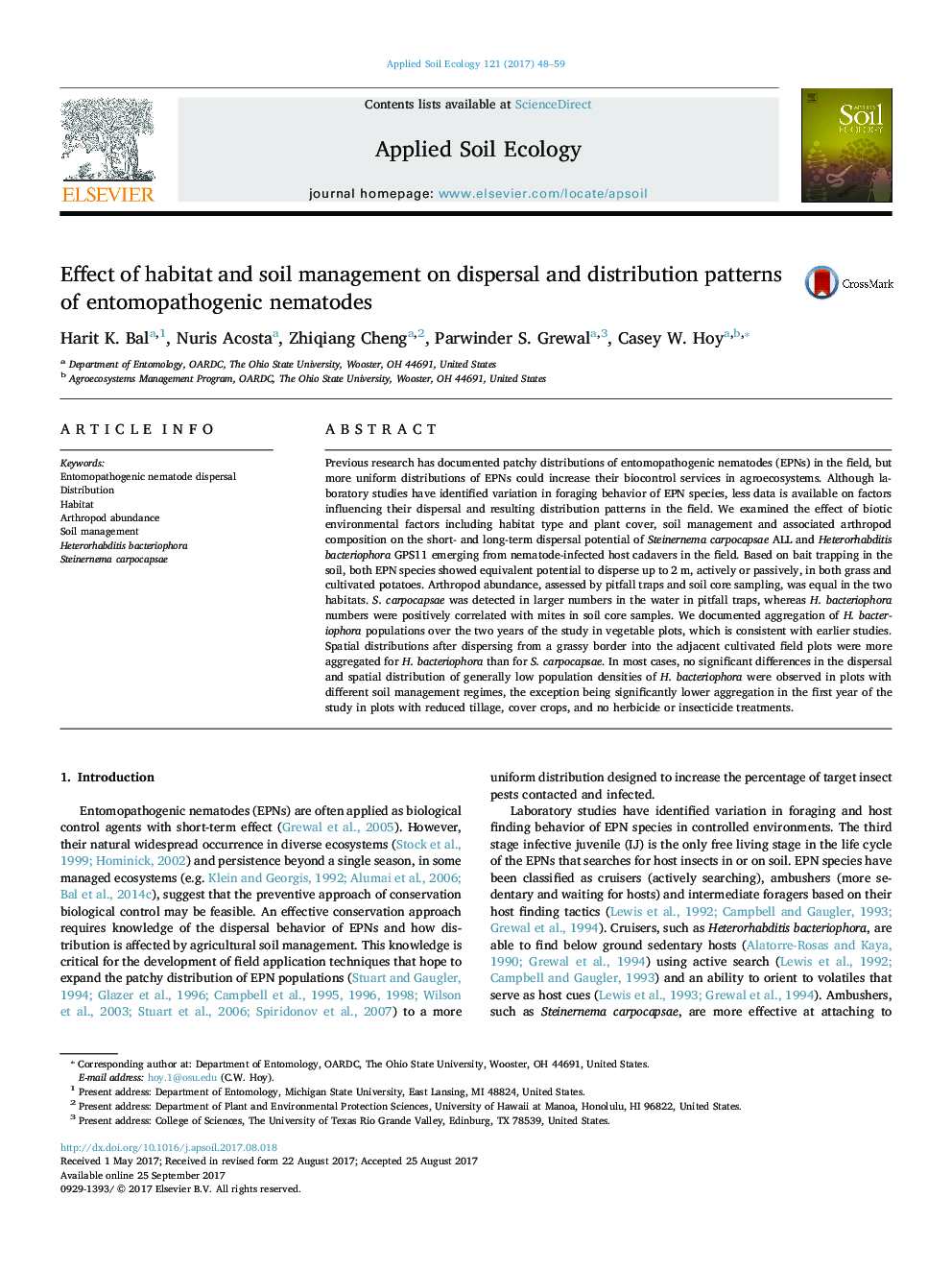| کد مقاله | کد نشریه | سال انتشار | مقاله انگلیسی | نسخه تمام متن |
|---|---|---|---|---|
| 5742543 | 1617763 | 2017 | 12 صفحه PDF | دانلود رایگان |
- Entomopathogenic nematode dispersal and distributions were measured in the field.
- Dispersal and distributions differed between H. bacteriophora and S. carpocapsae.
- Differences in association with arthropods were observed between species.
- H. bacteriophora distribution was more aggregated than S. carpocapsae over time.
- Soil management practice had few significant effects on dispersal or distribution.
Previous research has documented patchy distributions of entomopathogenic nematodes (EPNs) in the field, but more uniform distributions of EPNs could increase their biocontrol services in agroecosystems. Although laboratory studies have identified variation in foraging behavior of EPN species, less data is available on factors influencing their dispersal and resulting distribution patterns in the field. We examined the effect of biotic environmental factors including habitat type and plant cover, soil management and associated arthropod composition on the short- and long-term dispersal potential of Steinernema carpocapsae ALL and Heterorhabditis bacteriophora GPS11 emerging from nematode-infected host cadavers in the field. Based on bait trapping in the soil, both EPN species showed equivalent potential to disperse up to 2Â m, actively or passively, in both grass and cultivated potatoes. Arthropod abundance, assessed by pitfall traps and soil core sampling, was equal in the two habitats. S. carpocapsae was detected in larger numbers in the water in pitfall traps, whereas H. bacteriophora numbers were positively correlated with mites in soil core samples. We documented aggregation of H. bacteriophora populations over the two years of the study in vegetable plots, which is consistent with earlier studies. Spatial distributions after dispersing from a grassy border into the adjacent cultivated field plots were more aggregated for H. bacteriophora than for S. carpocapsae. In most cases, no significant differences in the dispersal and spatial distribution of generally low population densities of H. bacteriophora were observed in plots with different soil management regimes, the exception being significantly lower aggregation in the first year of the study in plots with reduced tillage, cover crops, and no herbicide or insecticide treatments.
166
Journal: Applied Soil Ecology - Volume 121, December 2017, Pages 48-59
